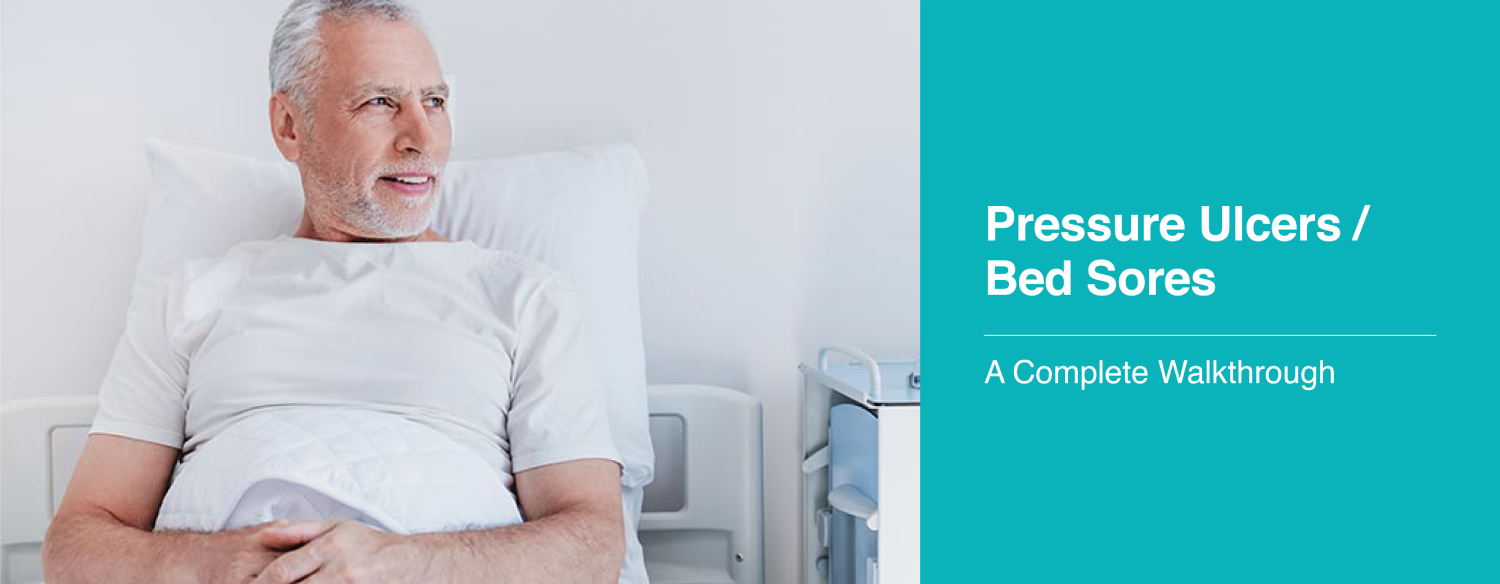
What are pressure ulcers?
Pressure Ulcers are commonly known as Bed sores or Pressure sores. Whenever there is prolonged pressure on the skin, the underlying tissues get damaged and form pressure ulcers. People who are usually bed ridden or sitting on a wheelchair with very less movement develop bed sores.
Symptoms of Bed sores / Pressure Sores:
- Mild swelling
- Pus or pus-like draining
- Change of skin colour
- Change of temperature in that part (cooler/warmer )
- Tenderness of skin
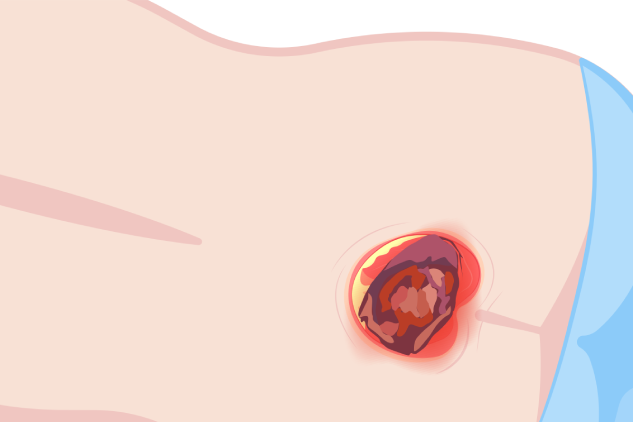
Areas where Pressure sores appear to people who are bed ridden:
- Back & sides of head
- Shoulder blades and elbows
- Lower back (hip and tail bone area)
- Heels, area around knees
- Tenderness of skin
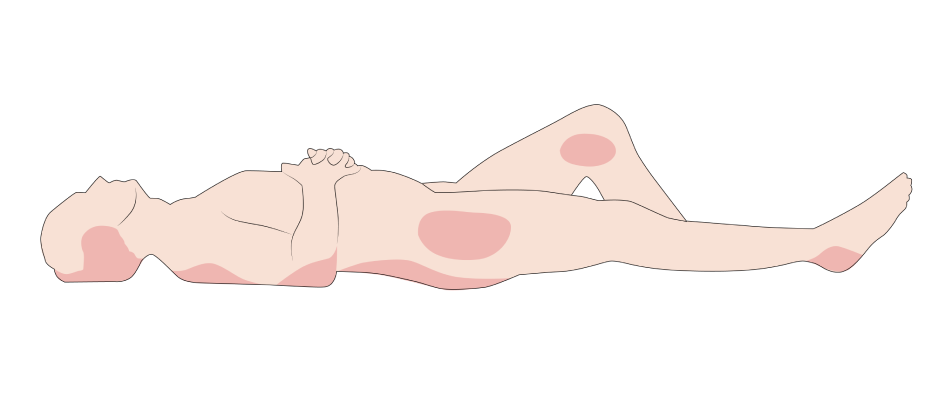
Areas where Pressure sores appear to people who are on wheelchair:
- Buttocks & tailbone
- Upper back and back of arms
- Under the thighs
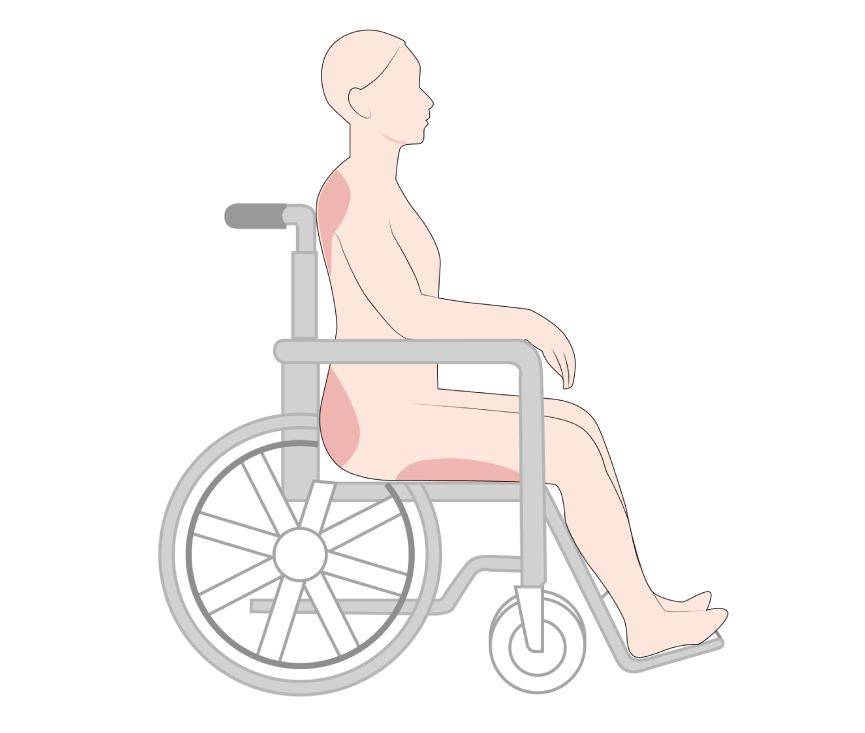
Stages of Pressure ulcers:
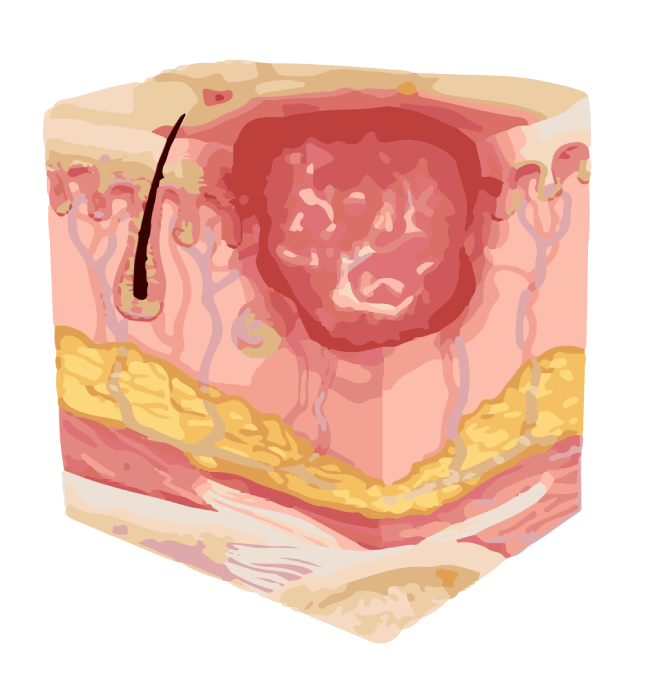

Stage 2: Shallow open ulcer where the layers of skin are damaged
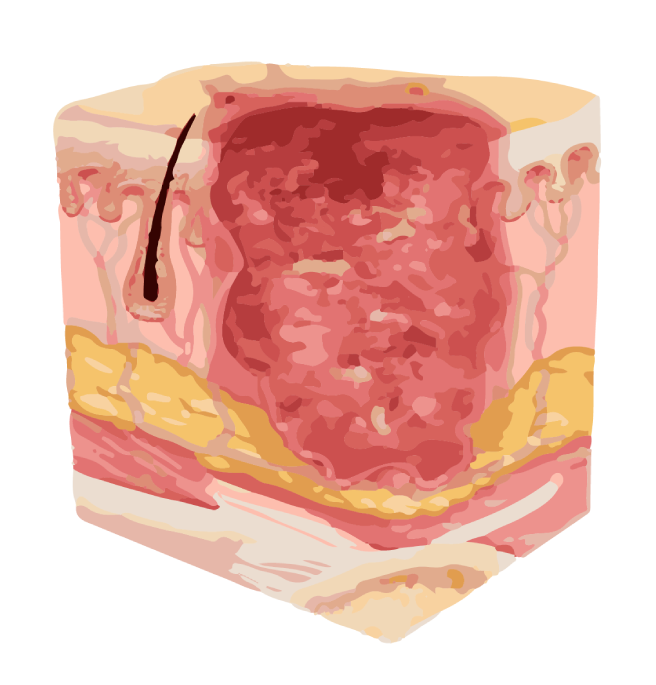
Stage 3: Enlarged ulcer with full-thickness tissue loss
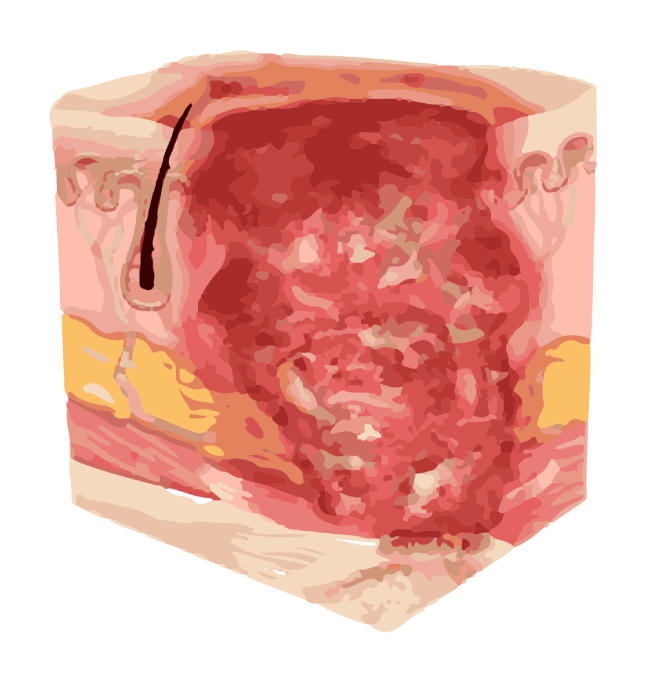
Stage 4: Further enlarged ulcer where there is full tissue loss with exposed bone, tendon, or muscle.
Without proper treatment, ulcers can move from stage 1 to stage 4 very fast.
Causes of Pressure sores/ Bedsores:
Pressure: Prolonged pressure in any part of the body reduces blood flow to the tissues under pressure. Reduced blood flow means reduced oxygen and nutrients. This can lead to tissue damage and death.
Shear: when two surfaces move in opposite directions, shear occurs. For example: When the bed is elevated near the side of the head, the body slides downward. As the tailbone moves, the skin above tailbone remains there and the skin gets stretched. When prolonged, it can cause an ulcer.
Friction: When fragile/moist skin rubs against clothes or bedsheets, it causes friction. This makes that area more vulnerable to ulcers.
Complications of pressure Sores:
If not treated on time, pressure Sores can lead to complications that can be life-threatening.
Cellulitis: cellulitis is a kind of infection that happens on the skin and connected soft tissues. It usually causes pain, however, people with nerve damage do not feel the pain and this delays diagnosis and medication.
Sepsis: Ulcers can lead to sepsis, however, it is rare.
Bone/Joint infection: Pressure ulcer infection can burrow into joints leading to Join infections like Septic Arthritis which damages cartilage and tissue. Bone infections like Osteomyelitis can reduce joint and limb function
Cancer: Non-healing long-term wounds, also called Marjolin’s ulcers can develop into squamous cell carcinoma
How to Treat Pressure Sores:
There are multiple treatments available to treat pressure Sore effectively. It is best to consult your doctor.
Maxiocel Woundcare dressing has been extremely effective in healing bed ulcers, even the ones which are long-term.
Maxiocel has properties that reduce infection and bring the blood out to the surface. Once the blood flow is better, there are higher chances for the wound to heal faster.
 A collaborative study with Harvard Medical School
A collaborative study with Harvard Medical School